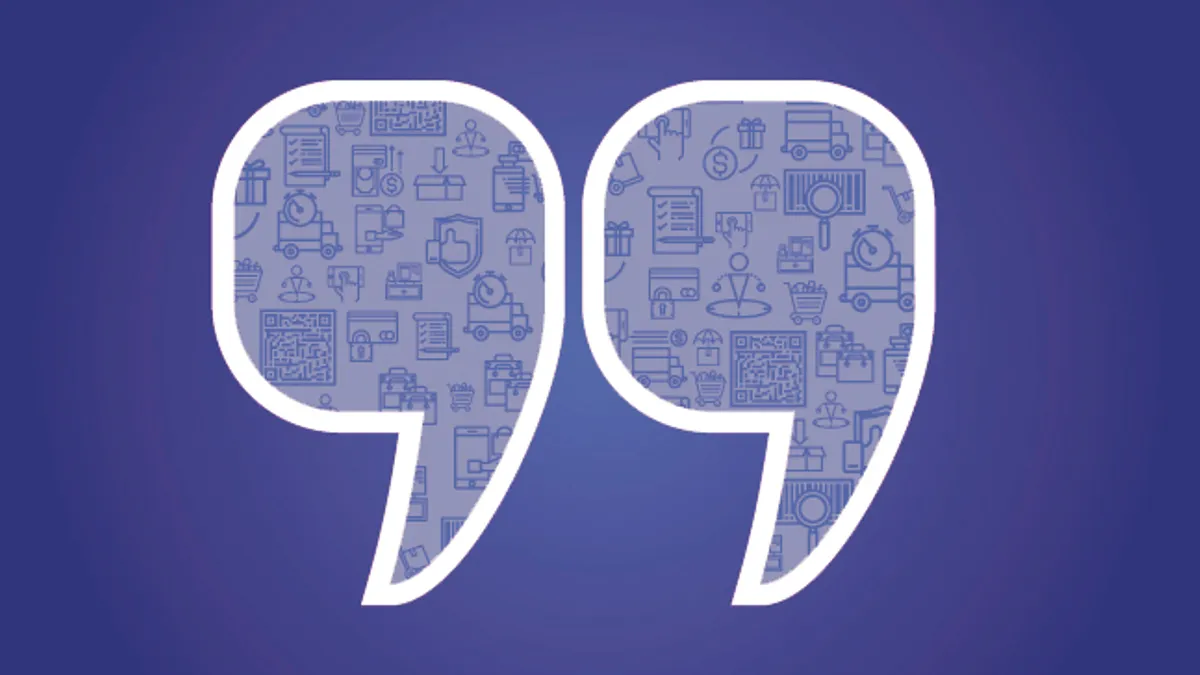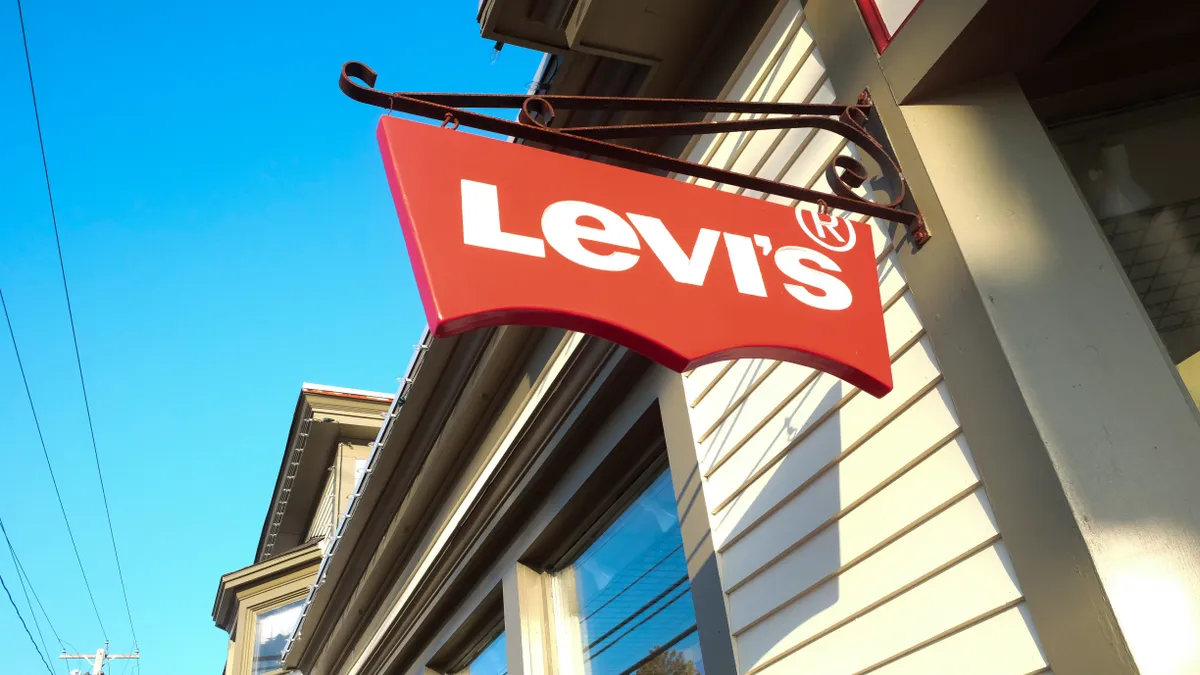Editor's Note: The following is a guest post by Lee Peterson, executive vice president of thought leadership and marketing at WD Partners. The views are the author's own.
It simply didn't make sense at first blush: About half the people said they loved Walmart; the other half said they don't. Even more confounding, such sharp customer polarization often hinged on the same metric: Customer service. How did the world's largest retailer manage to measure up to half the people, even as it failed the other half? Better yet, what would help them turn things around with its non-fans?
As we're now full swing into the holiday season, Black Friday madness featuring stampedes of customers fighting over two deeply discounted TVs doesn't help Walmart shake its haters. Though store battles for deals are likely few and far between, perception is everything for the potential occasional Walmart shoppers. Even if the footage is from years ago, if the media shows Walmart as the poster child for wild times on the day after Thanksgiving, it continues to hurt the brand.
When we surveyed more than 4,000 shoppers, asking them to rank their favorite brands out of 100 retailers, no other company elicited the kind of polarizing responses Walmart did. This enigmatic finding about Walmart emerged during year two of WD's longitudinal study of consumer sentiments around 100 of the top US retail brands. It was only a year ago when we set out to rank the good, bad and ugly of the retail industry. For the first time, in 2017, we learned what brands, among 100 top players, were winning (good), stuck in the middle (bad), or at the point of no return (ugly). This research dive gave us a new way to think about how consumers really felt about brands during a period of massive upheaval and disruption — in large part driven by Amazon, the world's largest online marketplace.
"If Amazon manages to elicit almost universal admiration from its customer base, while Walmart only does among half its customer base, what might be done to fix the situation. Or put another way: Can Walmart turn its haters into fans?"

Lee Peterson
WD Partners
In designing this unprecedented research project, we let go of those archaic and arbitrary categories that have animated consumer research for decades. No more boomers versus millennials nonsense. Instead, we divided consumers into two far more logical categories, based on the formative experiences people have had with technology during their lifetimes: Digital Natives and Digital Immigrants. We defined Digital Natives as shoppers between the ages of 18 to 29, a consumer segment who has grown up in a digital world, embracing a world dominated by e-commerce. We defined Digital Immigrants as 46 or older, or consumers whose formative years were spent in the analog world, meaning they grew up before the digital revolution upended every norm of consumer culture and shopping — and so they interact with it as if newcomers to a new land.
Could this explain why Walmart's customer base reported such polarized sentiments about it? Perhaps.
After all, you might logically call Digital Natives the Amazon generation. Amazon effectively entered the world in 1994, making it, at 24, a Digital Native itself. Walmart, on the other hand, founded by Sam Walton in 1968, is 54. Although the world's largest retailer, Walmart is still a Digital Immigrant. Moreover, could this generational divide explain why Amazon is seemingly immune from the same kind of deep enmity Walmart engenders among half of its customer base?
Whatever the answer, it's a worrisome finding for Walmart, considering there was no similar customer polarization among Amazon's customer base. Walmart is a half a trillion-dollar company, with more than twice as much revenue as Amazon. Yet such an obvious weakness could threaten Walmart's dominance over the long-term. Still, according to the U.S. Commerce Department, about 80% of sales still happen in stores (excluding auto dealers, gas stations, restaurants and bars).
People who don't like Walmart, really don't like Walmart
Amazon was chosen as the most popular "good" brand. But it was also identified as the "best" brand, among all others. Its dominance over every other retailer we asked customers to rank was definitive, with double-digit leads over the rest of the competition. When asked what retailer "gets me," Amazon was chosen as the top brand by 81% of respondents, up from only 79% the year before. Meanwhile, Walmart was chosen as a retailer that "gets me," by only 56% of respondents (although, notably, that was up from only 53% the year before). In short, Amazon's unchallenged first position should deeply worry Walmart.
Faced with this finding, we dug deeper. Was there a demographic explanation? Was the split consistent along income lines? How did these polarizing responses break out along gender, income, and generational lines?
As we searched for answers, we did find some good news for the world's largest retailer. The people who love Walmart, really do love Walmart. That loyalty is built around one theme. Price. Price. Price. Price. Price. That was the sentiment echoed by a variety of customers: a 30-something man with a household income over $150,000, a 30-something man with an income over $100,000, a 40-something female with an income around $50,000, a 20-something male with an income over $100,000 and a 20-something female with an income under $50,000.
But on the bad news front, the people who don't like Walmart, really don't like Walmart, with the consistent and unifying gripe — customer service. Once again, it didn't matter what the income level, gender, or age of the respondent was — frustration with the retailer's customer service was shared by almost all respondents."Prices are low, but customer service is poor," according to a woman with a household income around $40,000, who added: "So is the treatment of the workers."
These results are nothing less than an existential indictment against the world's largest retailer. After all, customer service is — or should be — Walmart's most viable defense against its biggest rival: Amazon. But it isn't. At least for half its customer base. A typical response on Amazon's customer service, across gender, income level and age: "Customer service is amazing."
If Amazon manages to elicit almost universal admiration from its customer base, while Walmart only does among half its customer base, what might be done to fix the situation. Or put another way: Can Walmart turn its haters into fans?
"It's a tall task, but Walmart may have the best shot to steal the 'America's Favorite' title from Amazon."

Lee Peterson
WD Partners
Our research indicates there might be some underlying demographic explanations, but we do not believe it is the determining factor, Amazon, after all, is admired across all income levels, genders, and ages.
Consider the average household income for Prime users — $150,000. That's more than triple that of the the typical Walmart shopper. The average Walmart shopper is a white, 51-year-old female with an annual household income of $56,482.
On the conceptual front, Walmart just introduced its town center idea, which appears to be directly positioned to increase the number of fans and reduce those haters. The idea centers on disbanding the big box and turning it into an area with green space, outdoor seating, strategic partners and city-like amenities that could potentially be a draw for the current Walmart haters.
Speaking of partners, even Walmart's recent acquisitions indicate the retail giant is looking to expand its customer base, or, at the very least, learn from smart brands like Bonobos and Eloquii. Odds are, these types of acquisitions will continue in the near future, as Walmart tries to make up ground on Amazon while the opportunity is still there.
Consistent with our research findings, Walmart also recognizes it needs to make improvements on the customer service front, and they're starting with improving employee circumstances. While Amazon recently increased its minimum wage to $15 per hour, Walmart increased its wages to at least $11 per hour and started a five-year, $100 million Retail Opportunity Initiative designed to increase employee education opportunities and to retain more employees through the prospect of career advancement.
In the end, only more research might unearth what's really going on here. Is this divide within Walmart's customer base reconcilable? Only one thing is certain: Complacency shouldn't win. For a brand as big as Walmart, competing with Amazon will not allow settling for a 50-50 split between lovers and haters. It's a tall task, but Walmart may have the best shot to steal the "America's Favorite" title from Amazon.


















